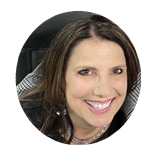
Starting with our August 2021 issue, we have been following a group of school leaders as they led their school communities through a year of rebuilding after the disruptions encountered in the 2020–2021 school year. While their schools, locations, and experiences have been very different from each other, they all share a strong, schoolwide commitment to social and emotional learning and to supporting student and teacher success. This month, three of our school leaders reflect back on how they approached SEL over the last school year and how it may impact their approach for the next school year.
What are you doing now to plan for SEL in your school communities next year?
Leslie Paynter: We are adding an SEL component/form to each student’s individual portfolio. The SEL form will provide important information and insight for their teacher next year regarding a student’s social and emotional strengths and the areas where they may need additional support. With this information, teachers can start off the new school year in a proactive rather than reactive way.
We are also reviewing the various aspects of the Fly Five curriculum with teachers and staff to make decisions about how to improve its implementation for the 2022– 2023 school year. We recognize that those students performing at and above grade level will also need additional grade-level content enrichment and social-emotional support. Therefore, we are developing a summer project work enrichment camp for some of our rising fourth and fifth graders where they will target a specific problem to solve and/or a community project at our school that will improve learning and engagement for our students during the 2022–2023 school year. Through the summer project work enrichment experience, students will practice and develop the habits of mind and characteristics of lifelong learners, including persistence, flexible thinking, striving for accuracy and precision, questioning, creating, innovating, and building empathy.
Trey Veazey: As the doors literally begin to swing open again, I am pleased that we are looking at enhancing and increasing the opportunities for family connections. A plethora of emotional deposits are necessary before even considering a withdrawal of any sorts, and it is critical that students and families alike recognize that their investment in our school and its programs is reciprocal to our investment in them and their growth and belonging. We are already setting the stage to see students and families involved in SEL-centric learning opportunities, ones that we anticipate will be like tiny ripples of hope.
Aliza Kadish: Currently, teams are meeting with the curriculum specialist and principal to reflect on what worked well this year, where the gains have been, and what our goals are for next year. We have renewed our license for the Fly Five curriculum for several years. And although we’ve already seen growth, we know that it will take many years before we see real change. We have dedicated monies to purchase several books for each classroom library that dovetail with Fly Five. We also plan to have a faculty mentor—a teacher who is a true rock star and cheerleader for Fly Five—to help support and guide her peers.
What is something successful from your SEL approach this year that you plan to carry over into next year?
Leslie Paynter: We will continue to implement the Fly Five curriculum and purchase additional teacher manuals to make it easier for the teachers to access and implement. Our school counselor will provide continuing professional development to assist in weaving the lessons into our project work and our core instruction.
Trey Veazey: This year, a good bit of our work centered on belonging, and I am excited to see that we are shifting toward utilizing those feelings of belonging to help members of our community see, understand, and make use of their value. Our first core value hinges on the infinite dignity and worth of the individual, and I want to see our division lean into assisting those individuals who make up our school community to see the infinite dignity and worth that they bring to our school. Understanding the value that we bring helps us be united with a shared vision, and that can only bring about a healthy goodness that benefits everyone involved.
Aliza Kadish: The slow and steady approach will be carried over into next year. Some teachers went full force on the implementation of Fly Five, while others were slow to warm to the program. With support, those who have been slow to warm to the program have been trying different aspects and using different competencies that are within their comfort zone. This gave teachers the space to get comfortable to try and feel successful, rather than feeling they couldn’t do what others achieved.
What is something you will do differently next year based on your experience this year?
Leslie Paynter: Find better ways to hold all teachers and staff accountable for teaching the Fly Five lessons with consistency and fidelity. Also, given the difficulties some of our students are experiencing, our counselor wants to increase his weekly guidance lessons and provide more opportunities to conduct small SEL student groups.
Trey Veazey: We have been making use of Respon- sive Classroom for nearly five years, and it feels like we are in a good place to kick it up a notch, creating space for teachers to really take in, digest, and pragmatically implement additional components of the approach. I am also hopeful that we can see SEL instruction become more embedded into the spaces of our curricula that most allow for this. Having SEL be more representative of all that we do rather than be a performative piece on a separate stage is a primary goal for me this upcoming year.
Aliza Kadish: The focus of this year was in making teachers comfortable with a social- emotional learning curriculum. Although we did some parent education, it was not a focus. We plan to use the home-school connections during the next academic year. We know that this will be key in seeing consistent, steady student social- emotional growth. As a school, we are partners with parents, and this aspect of our partnership will be strengthened for the coming school year.
Is there anything else you would like to share about what’s happening with SEL in your school community?
Aliza Kadish: In my conversation among local school leaders from a variety of different types of schools, I have found that few schools, if any, have social-emotional curricula as part of their academic day. Many say they teach the Golden Rule and the rules of living in a school community, while others say they bring in special assembly programs or that their school counselor takes care of students with those needs. Making the social-emotional needs of every student important in a holistic way is one more reason that parents choose our school.

Aliza Kadish—Principal, Beacon Hill Preparatory School, Miami Gardens, FL

TreyVeazey—Assistant head of Lower School, The Walker School, Marietta, GA

Leslie Paynter—Managing director/principal of Alamance Community School (ACS), Haw River, NC
